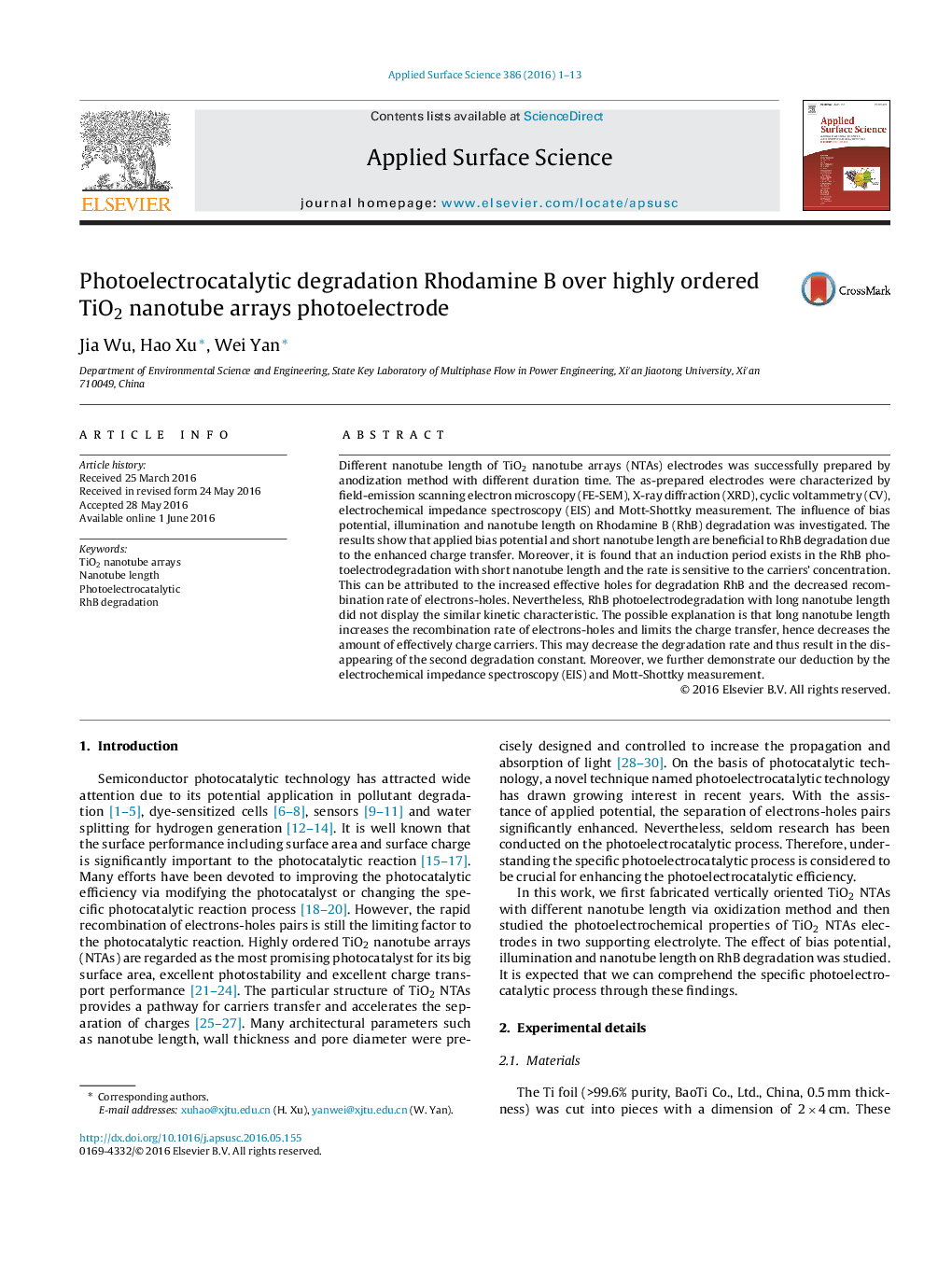| Article ID | Journal | Published Year | Pages | File Type |
|---|---|---|---|---|
| 5347255 | Applied Surface Science | 2016 | 13 Pages |
Abstract
Different nanotube length of TiO2 nanotube arrays (NTAs) electrodes was successfully prepared by anodization method with different duration time. The as-prepared electrodes were characterized by field-emission scanning electron microscopy (FE-SEM), X-ray diffraction (XRD), cyclic voltammetry (CV), electrochemical impedance spectroscopy (EIS) and Mott-Shottky measurement. The influence of bias potential, illumination and nanotube length on Rhodamine B (RhB) degradation was investigated. The results show that applied bias potential and short nanotube length are beneficial to RhB degradation due to the enhanced charge transfer. Moreover, it is found that an induction period exists in the RhB photoelectrodegradation with short nanotube length and the rate is sensitive to the carriers' concentration. This can be attributed to the increased effective holes for degradation RhB and the decreased recombination rate of electrons-holes. Nevertheless, RhB photoelectrodegradation with long nanotube length did not display the similar kinetic characteristic. The possible explanation is that long nanotube length increases the recombination rate of electrons-holes and limits the charge transfer, hence decreases the amount of effectively charge carriers. This may decrease the degradation rate and thus result in the disappearing of the second degradation constant. Moreover, we further demonstrate our deduction by the electrochemical impedance spectroscopy (EIS) and Mott-Shottky measurement.
Related Topics
Physical Sciences and Engineering
Chemistry
Physical and Theoretical Chemistry
Authors
Jia Wu, Hao Xu, Wei Yan,
